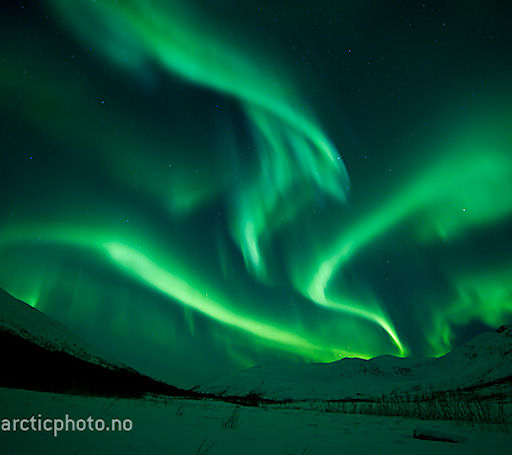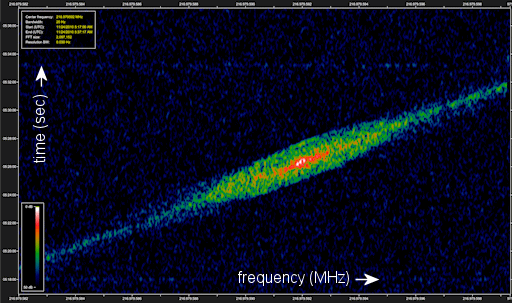AURORA ALERTS: Did you miss the Northern Lights? Next time get a wake-up call from Space Weather PHONE | | |
GEOMAGNETIC STORM IN PROGRESS: A moderate (Kp=6) geomagnetic storm is in progress. "We are experiencing an explosion of Northern Lights," reports Therese van Nieuwenhoven of the Polar Light Center in Lofoten, Norway. "Suddenly, our magnetometers began to show big activity and we could see the most beautiful and moving auroras. What a surprise!"
"I did not expect auroras tonight," agrees Bjørn Jørgensen of Tromso, Norway, "but suddenly there was a huge, powerful outburst that lasted for about an hour and a half." He photographed the display using a Nikon D3s:

more images: from Graeme Whipps of Chapel of Garioch, Aberdeenshire, Scotland; from Ivan Kravjansky of Ora, Meløy Kommune, Norway; from Halldor Sigurdsson of Reykjavik, Iceland;
November 2010 Aurora Gallery
[previous Novembers: 2009, 2008, 2007, 2006, 2004, 2003, 2002, 2001, 2000]
RADAR MOON: The job of the US Air Force Space Survellance Radar in Texas is to monitor the space around Earth for satellites, meteoroids, and space debris. On Nov. 23rd, something much larger passed through the radar's primary beam: the Moon. Using a surplus military antenna and a receiver tuned to the radar's frequency of 216.983 MHz, electrical engineer Pieter Ibelings of Atlanta, Georgia, recorded the echo. Click on the dynamic spectrum to hear the Moon's long, slow ping:

Click to play an audio recording
"I have been looking at objects crossing the radar fence for many years now," says Ibelings. "The nice thing about the Moon is that you can image it." Using the delay-doppler technique, he de-skewed the echo to produce a radar picture: The Moon is a sphere!
"The will be a few more passes this month," he says, "and I plan to be listening." This means there could be more lunar echoes on Spaceweather.com in the near future, so stay tuned.
BONUS: For hobbyists interested in capturing their own lunar echoes from the Space Surveillance Radar, Ibelings offers the following: "Most of the equipment I use is homebrew, not much different from that used for looking at satellite or meteorite crossings. The reflections from the Moon can be pretty strong using a long yagi and preamplifier. Typically you get three reflections at 216.97, 216.983 and 216.99 MHz as the moon crosses all three transmitters. To calculate the crossing, one looks for the moment of time when the lunar azimuth has the following values at the radar sites: 83.9º at Gila River, AZ; 91.4º at Lake Kickapoo, TX; and 98.1º in Lake Jordan, AL."
Potentially Hazardous Asteroids (
PHAs) are space rocks larger than approximately 100m that can come closer to Earth than 0.05 AU. None of the known PHAs is on a collision course with our planet, although astronomers are finding
new ones all the time.
On November 27, 2010 there were 1164 potentially hazardous asteroids.
Notes: LD means "Lunar Distance." 1 LD = 384,401 km, the distance between Earth and the Moon. 1 LD also equals 0.00256 AU. MAG is the visual magnitude of the asteroid on the date of closest approach. | | The official U.S. government space weather bureau |
| | The first place to look for information about sundogs, pillars, rainbows and related phenomena. |
| | Researchers call it a "Hubble for the sun." SDO is the most advanced solar observatory ever. |
| | 3D views of the sun from NASA's Solar and Terrestrial Relations Observatory |
| | Realtime and archival images of the Sun from SOHO. |
| | from the NOAA Space Environment Center |
| | the underlying science of space weather |

